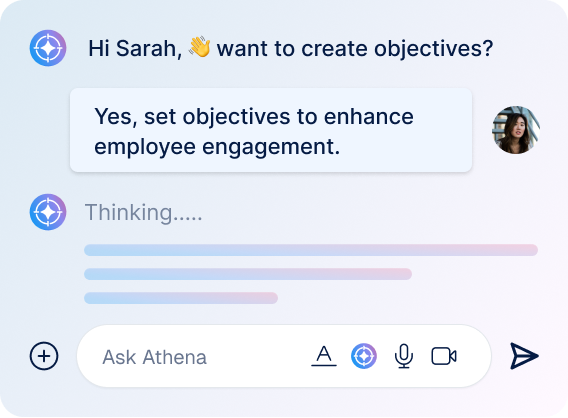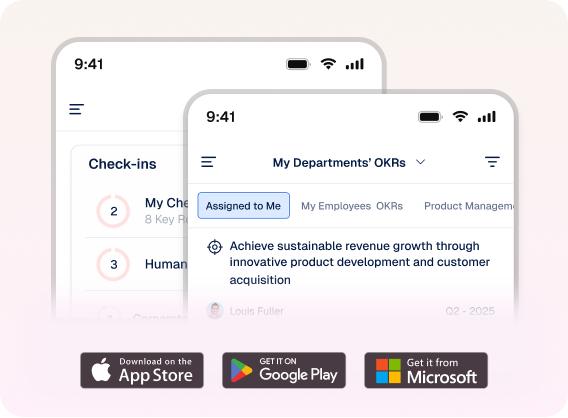TL;DR:
Aligning the Balanced Scorecard with ESG goals turns sustainability from a buzzword into measurable business value. By integrating environmental, social, and governance metrics into your financial, customer, internal process, and learning perspectives, you can drive long-term growth, strengthen stakeholder trust, and future-proof your business.What is ESG (Environmental, Social, and Governance)?
ESG stands for Environmental, Social, and Governance. It’s a way to measure how responsible and ethical a business is—not just how much money it makes.Environmental (E): How a company tries to protect the planet. It answers some questions like
- Does the company use clean or renewable energy?
- Are they working to reduce pollution or waste?
- How do they manage their use of water and natural resources?
Social (S): How a company is kind, fair, and respectful to the people. It asks questions like
- Is the workplace safe and fair for all employees?
- Do they support diversity and mental health?
- How do they give back to the community?
Governance (G): How a company is run, leadership and decision-making. It is doing the right thing and looks at:
- Are company leaders honest and transparent?
- Do they follow laws and treat investors fairly?
- Is the board of directors diverse and ethical?
Why do ESG (Environmental, Social, Governance) Goals matter?
Today’s stakeholders care about more than just profits; they want to see real impact and accountability. Employees, too, are demanding their employers take a stand on issues they care about, including sustainability and other environmental, social and governance (ESG) issues. Investors are also demanding that enterprises adopt a more forward-looking and methodical view of sustainability initiatives.
Gartner states that a sustainable business seeks to create long-term stakeholder value by factoring social, economic, and/or environmental impact into strategic and operational decisions.

- Foster long-term sustainability
- Improve brand trust
- Attract value-aligned investors and customers
How does the Balanced Scorecard tie into ESG?
Businesses today can’t just focus on making money; they also need to show they care about people and the planet. The Balanced Scorecard helps bring it all together. It’s a tool that lets you track not just financial performance, but also your company’s progress on environmental, social, and governance goals. By adding ESG metrics to the scorecard, leaders can make smarter, more ethical decisions that reflect long-term priorities, not just short-term profits. It turns big ideas like sustainability and social impact into real, measurable goals that teams can work on every day. In short, combining ESG with the Balanced Scorecard helps you lead a business that’s both successful and socially responsible.We shall require a substantially nev manner of thinking if mankind is to survive.
How can you use the Balanced Scorecard for achieving your ESG goals
The ESG-BSC Alignment Framework
1. Financial Perspective- ESG Metrics: Cost savings from energy efficiency, ESG-linked ROI, revenue from sustainable products
- Goal: Show that being profitable and sustainable can happen together
- ESG Metrics: Customer satisfaction tied to ethical practices, NPS among eco-conscious consumers
- Goal: Make sure your brand’s reputation matches what customers now expect and care about
- ESG Metrics: Waste reduction, supply chain transparency, sustainable sourcing
- Goal: Find ways to work smarter while also doing the right thing
- ESG Metrics: Employee well-being, DEI initiatives, sustainability training
- Goal: Build a workplace where innovation and doing what’s right go hand in hand
- Environmental: Renewable energy usage, carbon footprint, waste management
- Social: Diversity in hiring, gender pay equity, and employee mental health
- Governance: Ethics training, board diversity, data privacy incidents
With these metrics, you can turn big sustainability ideas into real, trackable results.
Want to explore the Balanced scorecard further
A Practical Implementation Framework
Phase 1: Basic Assessment and Material Analysis
Before integrating ESG metrics, conduct a thorough materiality assessment to identify which ESG factors most significantly impact your business and stakeholders. Steps:- Map your value chain and identify ESG touchpoints
- Survey key stakeholders (investors, customers, employees, communities)
- Analyze industry benchmarks and regulatory requirements
- Prioritize ESG factors based on business impact and stakeholder importance
- Review existing data collection capabilities
Phase 2: Select the Right Metric and Targets
Choose metrics that are:
- Material: Address your most significant ESG impacts
- Measurable: Can be tracked consistently over time
- Actionable: Directly influenced by management decisions
- Comparable: Allow benchmarking against peers
- Cost-effective: Doesn’t require excessive resources to track
- Baseline: Establish current performance levels
- Benchmarks: Compare against industry leaders
- Science-based: Align with global goals (e.g., Paris Agreement for climate)
- Stakeholder-informed: Reflect stakeholder expectations
- Business-aligned: Support overall strategic objectives
Phase 3: Appropriate Integration and Alignment
Integrate ESG metrics into existing performance management processes:- Strategic Level: Include ESG metrics in board reporting and executive scorecards
- Operational Level: Cascade relevant metrics to business units and departments
- Individual Level: Link ESG performance to employee objectives and compensation
Phase 4: Choose the Right Technology and Infrastructure
Invest in systems that support ESG data collection and analysis:- Data Integration Platforms: Consolidate ESG data from multiple sources
- Analytics Tools: Enable trend analysis and predictive modeling
- Reporting Systems: Support both internal management and external disclosure
- Dashboards: Provide real-time visibility into ESG performance
Overcoming Implementation Challenges
1. Data Availability and Quality
Problem: ESG data is often fragmented, inconsistent, or unavailable.
Solutions:- Start with available data and improve quality over time
- Invest in automated data collection systems
- Partner with suppliers and stakeholders to improve data sharing
- Use proxy indicators when direct measurement isn’t feasible
2. Balancing Multiple Objectives
Problem: ESG goals may conflict with short-term financial performance.
Solutions:- Establish clear prioritization criteria
- Use scenario planning to understand trade-offs
- Communicate the long-term value creation story to stakeholders
- Consider blended value metrics that combine financial and ESG outcomes
3. Stakeholder Engagement Problems
Research points to three main mistakes companies often make when working with stakeholders:- Transactional vs. Transformational Relationships: Companies should think of stakeholders as interconnected actors for building enduring partnerships for system-level change.
- Lack of Co-Creation: Organizations “neglect to actively engage with stakeholders to co-create strategy map objectives and BSC metrics,” missing opportunities to build trust and ensure stakeholder commitment.
- Process vs. Outcome Focus: Sometimes, companies pay attention to the steps they take to meet stakeholder needs, but they fail to verify whether those efforts actually meet expectations.
4. Resource Bottlenecks
ESG integration requires significant investment in systems, people, and processes. Solutions:- hase implementation to spread costs over time
- Focus on high-impact, low-cost initiatives initially
- Using technology to automate data collection and analysis
- Build internal capabilities rather than relying entirely on external consultants
Conclusion
Almost three decades after the Balanced Scorecard was introduced, it remains the dominant framework for a company’s strategy execution and management. However, as Harvard Business School research shows, “by evolving the Balanced Scorecard and Strategy Map’s perspectives to reflect today’s expanded role for business in society, these powerful tools will continue to serve organizations and their strategy execution practices for decades to come.”
The move from traditional BSC to ESG-integrated frameworks shows a fundamental shift in thinking of ESG initiatives as a progressive and important activity for sustainable business success.
Make your Balanced Scorecard work for the planet and your profits
Related Articles
-
Cascading in Hoshin Kanri: A Practical, No-Nonsense Guide
Hoshin Kanri works when strategy cascades cleanly from the top of the company to the people doing the work. The... Read more
-
Strategic Planning vs. Operational Planning: Understanding the Difference
Every successful organization relies on both a clear vision of the future and a disciplined approach to making that vision... Read more
-
One Execution View for OKR and Balanced Scorecard Integration
TL;DR Companies don't have to choose between OKRs and Balanced Scorecard; they work better together. OKRs help set big goals... Read more
-
Do You Really Need to Choose Between OKRs and Balanced Scorecards?
We have seen this happen in dozens of groups, and it's always the same. You say that you're going to... Read more




